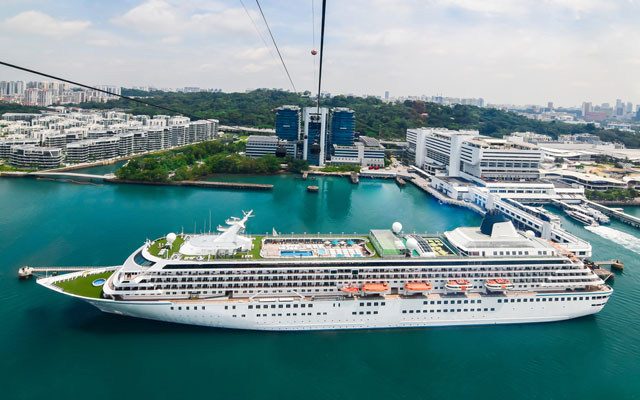The Singapore Tourism Board (STB) is rolling out a host of measures and initiatives to support cruise companies operating in Singapore, tiding one of the worst hit industries through the Covid-19 storm.
Supplementing the Cruise Development Fund, which typically provides support to cruise lines and in-market travel agents in their cruise marketing efforts, is enhanced support for companies that have committed to Singapore deployments through Cruise Development Fund partnerships.

STB will also be fine-tuning the reimbursement process to enable partners to receive these funds more quickly and easily, and is working on relief measures to help terminal operators cope with Singapore’s port closure.
Cruise vessels that require marine services such as bunkering, resupply and repairs will find these services available for them at anchorage in the Port of Singapore.
The support comes on top of the S$48 billion (US$33.4 billion) Resilience Budget announced by the Singapore government last month that includes assistance for local tourism companies, including cruise terminals, affected by the outbreak. STB is currently exploring its options and assessing if further support can be provided.
“We recognise that there are concerns on the safety of cruising and a need to reverse such negative sentiments and correct misperceptions. While the Covid-19 situation is in uncharted waters, Singapore is committed to playing its part with the global cruise industry to revive cruise tourism when the market rebounds,” said Annie Chang, director, cruise, STB.
She added that STB’s measures will focus on supporting the cruise lines that have invested in Singapore, strengthening consumer demand to sustain healthy occupancy and yields for the ships, skilling up cruise agents to sell cruise travel packages more effectively, as well as galvanising regional governments to restore popular South-east Asian itineraries in the recovery phase.
“We are exploring how we can leverage on this downtime to ramp up training and accreditation for travel agents. Given that 80 per cent of cruise packages in the region are sold through travel agents, and cruise is a nascent product, this would be a good opportunity for travel agents to skill up,” she shared.
To repair the public sentiment on cruising, STB is working with the National Environment Agency and other government bodies to roll out the SG Clean campaign, which aims to improve public awareness that local businesses, including cruise terminals, are maintaining high standards of cleanliness and sanitation.
When sailings resume, STB will also work with Singapore’s key homeported brands to understand their enhanced safety and sanitation measures.
The tide is expected to turn for Asia’s cruise industry in the long run. Chang explained: “The growth potential for cruises in Asia remains strong and our industry is resilient. For one, we have had many years of good growth, which underlines our strong foundation as a cruise hub.
“Singapore remains well-poised to capture the growing demand, due to our geographical location and good infrastructure.”
From 2015 to 2019, Singapore’s compound annual growth rate of cruise throughput stood at 15.6 per cent. Last year, the country’s foreign cruise throughput grew by 3.5 per cent despite supply constraints, with strong in-market demand from mid- and long-haul markets, noted Chang.
She expressed confidence that the volume of cruise passengers sailing in South-east Asia will maintain its expected growth rate of 4.6 per cent to 6.4 per cent per annum to reach up to an estimated 4.5 million passengers by 2035.




















